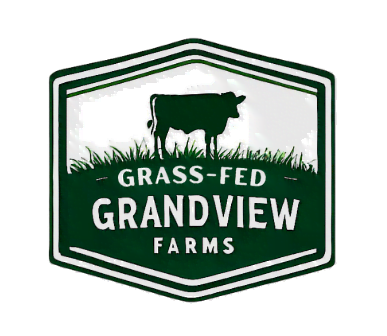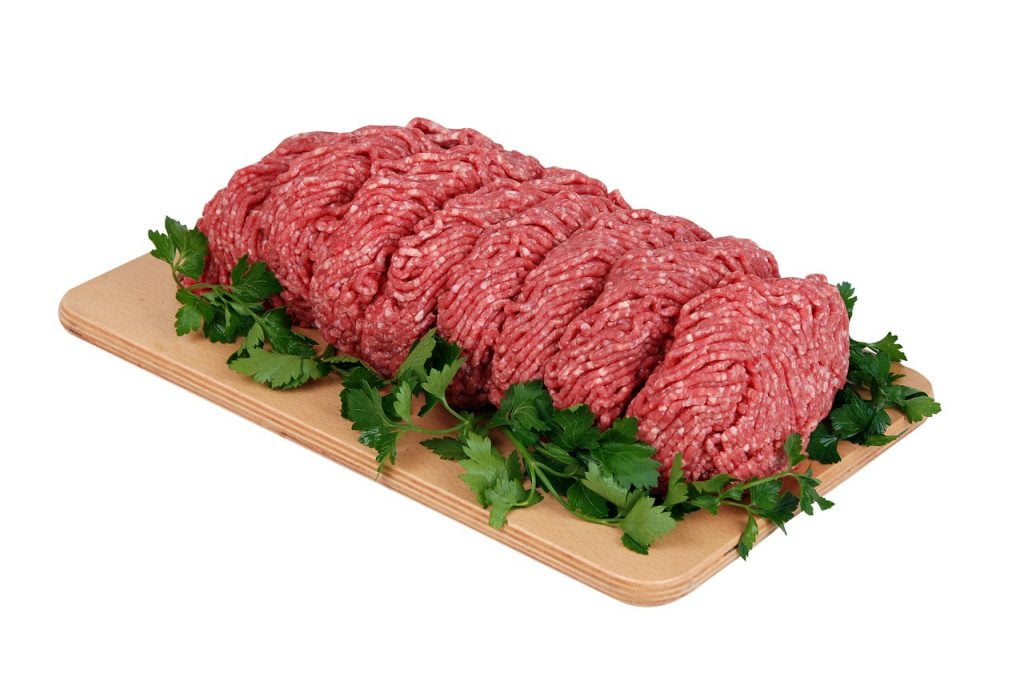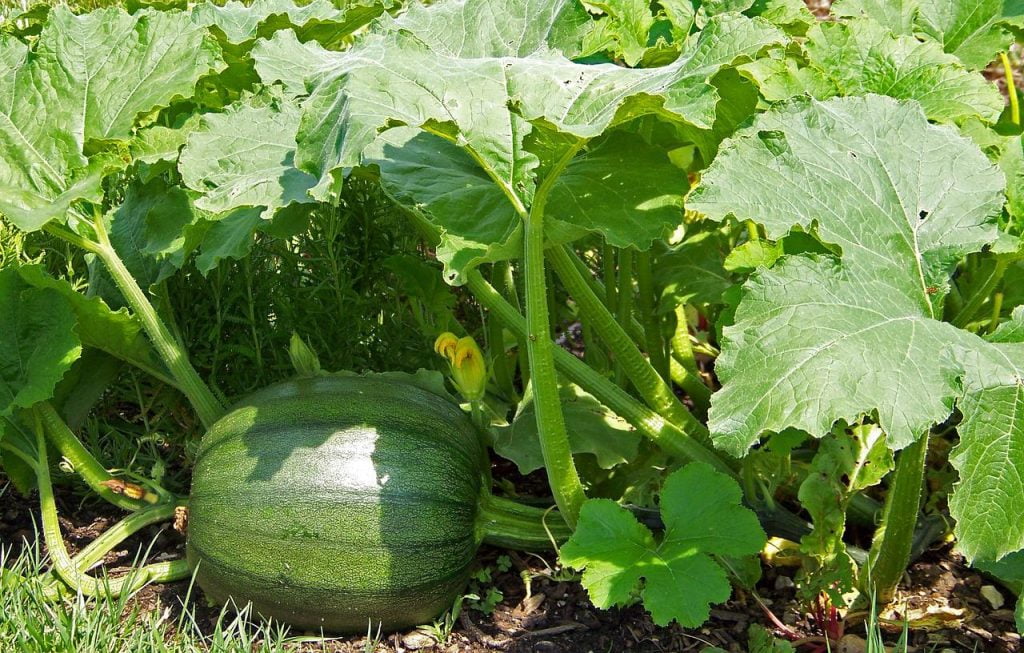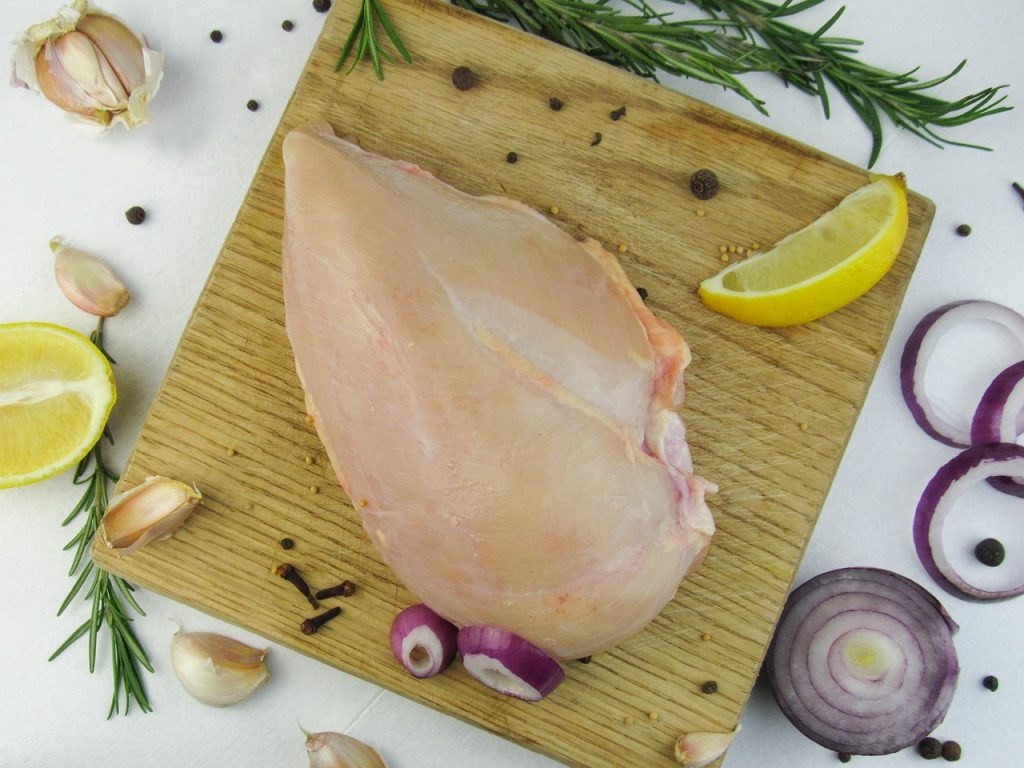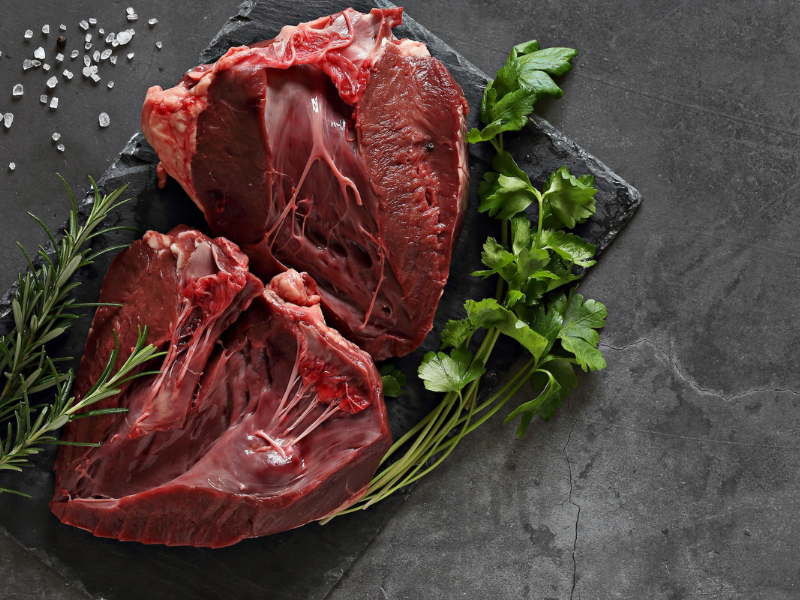
Forget kale and goji berries – the real unassuming superfood might be hiding right under your nose (or rather, grazing in a field). Grass-fed beef heart, once relegated to the realm of nose-to-tail enthusiasts, is emerging as a nutritional powerhouse, packed with a staggering array of essential nutrients often lacking in modern diets. So, ditch the protein shakes and dive into this nutrient nugget, and discover why grass fed beef heart deserves a place on your plate.
A Nutritional Powerhouse Disguised as Meat:
Beef heart, especially from grass fed animals, boasts an impressive nutritional profile. Also check the nutritional benefits of beef heart. Here’s a glimpse into its riches:
Protein Powerhouse: With a whopping 26 grams of protein per 100g serving, beef heart easily outshines most other meat sources. This high-quality protein is readily absorbed by the body, supporting muscle growth and repair.
Iron Champion: Beef heart is a champion of iron, containing nearly 5mg per 100g serving, significantly higher than the recommended daily intake for most adults . This makes it a valuable dietary source for preventing iron deficiency anemia, particularly for women and children.
B-Vitamin Bonanza: Beef heart is a treasure trove of B vitamins, essential for energy production, nervous system function, and red blood cell formation. It’s particularly rich in B12, B6, and niacin, often lacking in vegetarian and vegan diets.
Coenzyme Q10 King: This antioxidant superstar is crucial for mitochondrial function, energy production, and cellular health. Beef heart boasts one of the highest concentrations of CoQ10 among all food sources, making it a potential ally in combating age-related decline and chronic diseases.
Mineral Marvel: Beef heart is a rich source of essential minerals like zinc, selenium, and phosphorus, all vital for various bodily functions, including immune system health, thyroid function, and bone health.
Beyond the Numbers: Statistical Insights:
The nutritional prowess of grass fed beef heart isn’t just anecdotal. Here are some compelling statistics that highlight its significance:
Iron Deficiency: Iron deficiency anemia affects 25% of pregnant women and 2% of pre-menopausal women globally. Grass-fed beef heart, with its high iron content, could be a key dietary intervention to address this widespread issue.
B12 Deficiency: B12 deficiency is common in vegetarians and vegans, affecting up to 10% of the population. Including grass fed beef heart in the diet can help prevent this deficiency and its associated health consequences, like fatigue and nerve damage.
CoQ10 Decline: CoQ10 levels naturally decline with age, contributing to age-related health problems. Consuming CoQ10-rich foods like grass fed beef heart may help mitigate this decline and promote healthy aging.
Fun Food Facts to Fuel Your Heart’s Desire:
The largest recorded beef heart weighed a whopping 13.5 kg (29.8 lbs) and belonged to a Belgian Blue bull. Talk about a big heart!
Beef heart was a delicacy in ancient Rome, prized for its nutritional value and believed to strengthen the heart. Looks like the Romans were onto something!
In some cultures, beef heart is considered a powerful aphrodisiac. Whether it’s true or not, the nutrient content of beef heart certainly makes it a good choice for overall health and vitality.
Beyond the Hype: A Word of Caution:
While grass fed beef heart is a nutritional powerhouse, it’s important to consume it in moderation, like any other food source. Its high cholesterol content (around 180mg per 100g) may be a concern for individuals with heart disease or high cholesterol levels. Consulting a healthcare professional before incorporating beef heart into your diet is always advisable.
Unleashing the Powerhouse: Tips and Tricks:
Ready to embrace the heart-healthy power of grass fed beef heart? Here are some tips:
Source Responsibly: Choose heart from grass fed, ethically raised animals for optimal nutritional value and ethical considerations.
Preparation is Key: Beef heart can be tough, so slow cooking methods like braising or stewing are recommended. Alternatively, grind it into burgers or meatballs for a more convenient option.
Think Outside the Box: Don’t be afraid to get creative! Beef heart can be used in various dishes, from tacos and stir-fries to stews and even pâtés.
Grass Fed Beef Heart: Beyond the Hype, Embracing the Flavor
We’ve delved deep into the nutritional powerhouse that is grass fed beef heart, but the journey doesn’t end there. While its impressive nutrient profile speaks volumes, embracing this superfood also involves overcoming potential anxieties and exploring the world of flavors it unlocks. So, let’s address the common concerns and dive into the culinary adventures that await your adventurous palate.
Conquering the Hesitation:
“It’s too gamey!” – Fear not, the strong flavor associated with offal often dissipates with proper preparation. Opt for slow cooking methods or marinades to mellow out the taste. Additionally, sourcing heart from young animals ensures a milder flavor profile.
“I don’t know how to cook it!” – Worry not, culinary novice! Beef heart is surprisingly versatile. Grind it for familiar favorites like burgers and meatballs, braise it for melt-in-your-mouth stews, or slice it thin for flavorful tacos. Online resources and recipe inspiration abound, ready to guide you on your heart-y culinary journey.
“Isn’t it high in cholesterol?” – It’s true, beef heart packs a cholesterol punch. However, dietary cholesterol’s impact on blood cholesterol levels is a complex matter with ongoing research. Moderation is key, and consulting a healthcare professional for personalized guidance is always recommended.
Flavorful Adventures Await:
Global Inspiration: Take a trip around the world with beef heart! Moroccan tagines, Korean barbeque, and Italian heart-stuffed ravioli are just a glimpse into the diverse culinary landscape where beef heart shines.
Spice it Up: Don’t shy away from bold flavors. Experiment with aromatic spices like cumin, coriander, and paprika to create warm and inviting dishes. Herbs like rosemary and thyme also pair beautifully with beef heart, adding depth and complexity.
Offal Harmony: Embrace the nose-to-tail philosophy! Combine beef heart with other organ meats like liver or kidney for a symphony of flavors and a nutrient bonanza.
Remember:
Quality Matters: Source your beef heart from reputable butchers or farms prioritizing ethical practices and grass-fed animals.
Experimentation is Key: Don’t be afraid to try new things! The culinary world of beef heart is vast and waiting to be explored.
Start Small: Introduce beef heart gradually into your diet, allowing your taste buds to adjust and appreciate its unique flavor profile.
Beyond the Plate: Sustainable Indulgence:
Choosing grass fed beef heart goes beyond personal health benefits. It supports sustainable farming practices that prioritize animal welfare and environmental health. Opting for nose-to-tail consumption also reduces food waste, aligning your culinary choices with eco-conscious values.
The Final Bite:
Grass fed beef heart is not just a nutritional marvel; it’s an invitation to culinary adventure, sustainable practices, and a deeper connection to the food we consume. So, step outside your comfort zone, embrace the heart-y goodness, and savor the journey from nutrient nugget to flavorful delight. Your taste buds (and your body) will thank you for it.
Thanks for reading blogs from Grandviewfarms.
You may also like:
Nature’s Symphony: Embracing Organic Farming for Sustainable Agriculture
Beyond Conventional Agriculture: Exploring the Diversity of Alternative Farming Systems
Support Local, Enjoy Beef: Embracing the Ethical and Delicious Choice of Pasture Fed Cows
